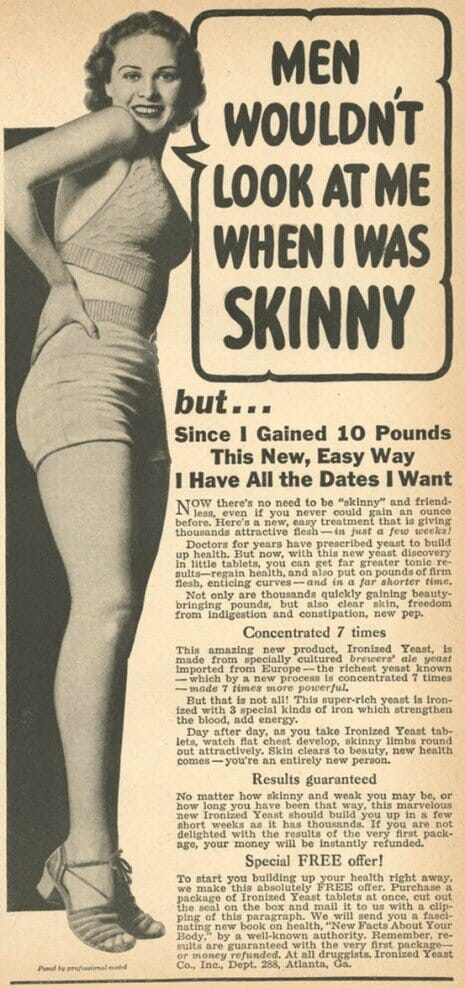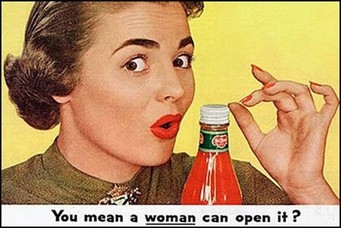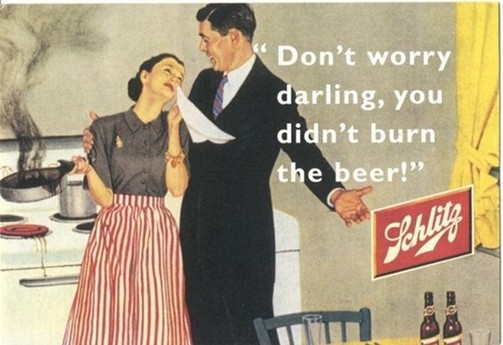- oriented toward self indulgence
- Comodification is a result of modernization
Visual Appearance and Imagery
- "the look" (Featherstone)
- packaged images for wide consumption (through media)
- what are these? For men? For Women?
- underline the importance of visual appearance
- create images which highlight who we are and WHO WE CAN BECOME
- premium on images of YOUTH (greater value to youthful bodies)
- leads to many techniques of BODY MAINTENANCE
- pursuit of outer appearance rather than health as part of the aging process
- imperative on health and regulation of RISKY ACTIVITIES by individuals (through discipline)
- smoking
- sugar
- large soda bans
- etc.
- Instrumental body maintenance (Featherstone again)
- exercise and dietary control (to look good)
- accompanied by the pursuit of pleasure (Calculated hedonism)
- excess an indulgence in consumption is countered through exercise and dietary control
- men for example will purchase this through supplements and gym exercise
- "Heathism" and body maintenance
- responsibility for ones body in response to health messages about disease prevention
- the body is a resource that can be preserved through vigilence
- cosmetic side effects: -people need to look good and feel good (inner state is conflated with outward appearance)
- prejudice against bodies that do not fit "the look" (which is sold over and over since it is almost impossible to achieve without consumption-clothing, plastic surgery, activities, etc.)
- appearance signifies inner discipline and invites moral evaluation
- getting "in shape"
- Transvaluation: the body is an unfinished product which seeks modification
- Bourdieu: says the body has SOCIAL VALUE and social class in particular
- material context in which bodies are located dictates shape and size
- bodily gestures and conduct reveal information about the social location in which a body develops- deeply ingrained gestures (habitus)
- tastes and preferences people have for one product rather than another are rooted in consumer culture rather than being individual choices (choices distinguish one group from another)
- Body as Social Capital: the activities, relationships and processes that allow people access to prized material and social goods and services (body behaviors that have value)
- Body as Cultural Capital: resources or repertoires of knowledge or taste that people use to build value and social status in contexts that are especially meaningful to them (body beliefs that have value)
- these processes and types of capital are particularly acute in relation to those who make a living displaying and performing their bodies (fitness gurus, models, professional athletes)
- people make investments in their bodies to be successful-and transform their bodies into a product that has certain exchange value-must CONSUME to do this
- workouts
- plastic surgery
- dietary controls
- interventions and modifications
- "gender capital" as a form of social capital
- masculinity, identity and embodiment
- shaped by homosexual norms and aesthetics (Queer eye)
- muscular mesomorph as a response to women gaining power in the workforce, etc since the 50's
- sexualized for the male gaze in media as women have been for quite some time the objects of female gaze for consumer culture
- discipline and docility
- personal discipline is important in the west as a marker of correct body image
- the beauty myth and male gaze
- de beauvoir (the second sex)
- female body is one that invites transformation. women have been asked historically to transform their bodies in different ways at different times
- no matter the period, women are encouraged to be BEAUTIFUL (Naomi Wolf-The Beauty Myth) and men are encouraged to own beautiful women -commodity
- consequences: constant monitoring and care which takes time and saps women of their potential to succeed in other endeavors.
- beauty and women's beautiful bodies become a currency, which encourages women to compete with one another
- women use beauty for access to public life, so (social capitol) they can fail on succeed based on this
- beauty demands counter economic gains, since women in public life are REQUIRED to meet beauty norms
- VISUAL IMAGES: Advertising and The Body
- You purchase the product, but also IDENTIFY WITH THE NARRATIVE and LIFESTYLE in which the product is embedded
- Products are given a SYMBOLIC EXCHANGE VALUE
- Changing Themes & Social Change in Advertising
1940s ads: Fat-shaming is rooted in skinny-shaming
The cultural obsession over weight, physical appearance, and body-shaming is nothing new....Just different!


- Good grief. I know it’s been trumpeted that the image of the ideal woman has shifted in the past 70 to 80 years from appreciating a more balanced, healthily curvy body type to the more emaciated look of the current culturally “ideal” body types, but I have to say – these ads made me feel just as crappy as the ones I see in today’s magazines. They do a pretty good job of telling women that no matter how they look, they don’t look good enough.
- Let’s see here: 1940's If you want to be popular, you can’t risk being skinny; skinny girls can’t be glamorous; you will have zero sex appeal if you’re a “beanpole”; men won’t look at you if you’re skinny; and those who are “naturally skinny” (why is that in quotes? Did they not think being naturally skinny was a real thing? And is the use of the word “flesh” creeping out anyone else?) need to pack on some pounds pronto…hmm.
- To be considered appealing, interesting and attractive, you have to change something about yourself since your natural state is repellant – doesn’t mean that they are all that different from today’s messages.
- The primary difference,may be that the ads of the past seem to focus more on the women finding a mate (and the terror that accompanies the prospect of not finding a mate), while the ads of today focus more on women being intensely sexually appealing to every person who gazes upon them.
- It is still a heavily gendered issue – there simply aren’t as many advertisements suggesting men would be more attractive if they made specific changes to their appearance and body weight as there are geared towards women.
- (Wolf) emancipation of women and the mass production of the beauty myth through advertising go hand in hand
- women's magazines as the vehicle for selling this lifestyle
- advertising supported these trends and reflected and reinforced the post-war swing toward domesticity

TRANSFORMATION OF "BEAUTY"
Society’s interpretation of beauty has significantly changed over time and will always continue to change.
Women are not coming up with these beauty and style decisions on their own, however. The media and advertising plays a huge role in influencing what women view as “beautiful”. Flooding women’s brains with the tan, tall, slender bodies of modern models is a tactic the media uses to keep society up with the times. If a certain image is repeated enough through television, printed ads, movies, commercials, billboards, etc., society will accept this image as the norm and copy it (Alice, 2010). In conclusion, as society transforms and changes over time, our image of beauty will subsequently continue to change as well.

- FERGUSON'S "Cult of Femininity"
- 1960's Cult of Femininity
- lasted well into the 1980s
- sees women as SEXUALIZED
- virginia slims (youv'e come a long way baby)
- Carlie (perfume) Tomboy
-
Themes:
Getting and keeping a man
pursuing a happy family
becoming beautiful
self-help
cooking tips
patterns for sewing your own clothing
crafts















No comments:
Post a Comment